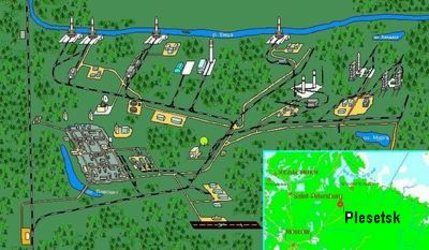SMOS Project Manager: interview with Achim Hahne
Achim Hahne has been responsible for managing ESA's SMOS Project since the mission was selected for full implementation in 2001. In an interview, he talks about his role and some of the challenges and rewards taking the mission from the drawing board to the launch pad.

Hahne, a German national, joined the Agency in 1983 as a research fellow. He then took a position in the Technology Directorate and supported developments for inter-satellite communications, which eventually resulted in the SILEX payloads on the Artemis and SPOT missions. In his next role, he joined Earth Observation and worked on Envisat, the ERS missions and MetOp before being nominated as Project Manager for SMOS.
Hahne obtained his MSc in Atmospheric Engineering at the Nuclear Research Centre in Jülich and a PhD from Aachen Technical University, both in Germany.
ESA: As Project Manager what are your main responsibilities?
Achim Hahne
It is my responsibility to deliver the mission in the right specification, on schedule and within budget. We conduct tests to ensure the payload and satellite meet performance requirements, while making sure the mission meets the needs of the scientific community. As for the schedule, delays have unfortunately been encountered – but mainly due to things beyond the Project's control, such as resource issues and the availability of a launcher. Naturally, delays also incur extra cost.
ESA: What have been the most challenging aspects of implementing the mission?
Achim Hahne
From my point of view, there have been three main challenges, which, in turn, have also proved rewarding.
Firstly, the SMOS mission has involved close cooperation with the French space agency, CNES. Of course, different agencies have different organisational procedures and cultures. Working together has involved patience, understanding and good will from both agencies, which paved the way for what ended up being a good collaboration and working relationship.
Secondly, the way the SMOS mission was set up did not involve a prime contractor for the satellite, who would normally lead the industrial team. Instead ESA and CNES shared this responsibility. This was greatly helped by the fact that the SMOS payload is carried on a Proteus platform that along with its ground segment has been used several times before. We, therefore, benefited from 'lessons learned', which were systematically fed back from the development and operation of previous missions.
Lastly, our prime contractor for the payload, EADS-CASA, was new to ESA, so we had to 'get to know each other'. However, it soon became very clear that we were going to make a great team. I regard the mutual respect, trust and newfound friendship we have built up over the years one of the most rewarding aspects of my role as Project Manager.
ESA: What sets SMOS apart from other Earth observation missions?
Achim Hahne
As I have already mentioned, the fact that two agencies have had joint responsibility for the management of the mission – I would say this is unusual. Secondly, we are taking a completely new approach technically for making observations of Earth. The interferometric ‘L-band’ instrument we are flying is the first microwave interferometer in space. In addition, its application to observe soil moisture and ocean salinity is also a first. Both the inter-agency cooperation and the innovative measurement approach is a showcase for ESA’s Earth Observation Envelope Programme, which calls for this kind of project implementation.
ESA: How many people have been involved in the development of the mission?
Achim Hahne
On ESA’s side, our team has reached up to 30 members during busy periods. Including the operations team, the number of people from CNES is about the same. The industrial team, from both EADS-CASA for the payload and Thales Alenia Space for the platform and satellite would probably add up to just over 100 together. Around 20 people have been involved from various industries for the ground segment development. Finally, there are around 20 groups linked to SMOS through the scientific community as well as some 30 other groups of varying sizes preparing for the calibration and validation exercises after launch. So, in total around 300 people have been involved in the mission.
ESA: How do you feel, now that SMOS is about to launch?
Achim Hahne
After 10 years of involvement – since the very beginning – I and my team members are really looking forward to the culmination of years of effort and dedication. The greatest reward for this would be the realisation of valuable data to advance science.
ESA: Where will you be for launch?
Achim Hahne
I will be in the Mission Control Centre at the launch site in Plesetsk. This does mean that after launch, I will be somewhat cutoff from the excitement of the ‘Launch and Early Orbit Phase’, which is controlled by CNES in France. This includes the deployment of the solar array and the antenna arms on the instrument. On the other hand, it gives me the chance to celebrate with the launch campaign team members, who by this time will have been working intensely for two months in less than comfortable conditions.
Editor's note:
This is one in a series of interviews with a few of the key people involved in the SMOS mission. Please check back, as the list will be added to over the coming weeks.




